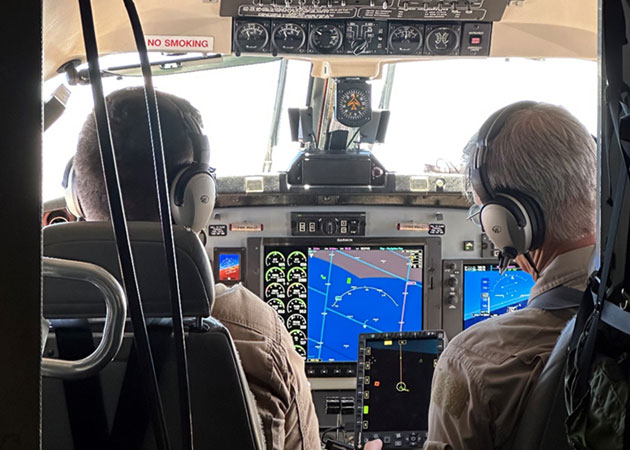- New mission planning software tested during U.S. Air Force Emerald Flag exercise
- Boeing partnering across industry to enable multi-domain solutions for the DoD’s evolving mission priorities
As the U.S. Department of Defense (DoD) continues to explore new capabilities and technologies to achieve missions in all domains from seabed to space and cyberspace, Boeing recently demonstrated its new software service called Decentralized Collaborative Planner (DCP) at this year’s second Emerald Flag multi-domain test exercise at Eglin Air Force Base in Florida.
“DCP represents mission planning on a new level, helping to prevent information overload for operators and allowing them to make faster and better decisions based on the best data available,” said Dan St. Pierre, test lead for Boeing’s multi-demonstration team in Phantom Works.
During a simulated combat mission at Emerald Flag, the Boeing team demonstrated how DCP, integrated onto a flying testbed aircraft, could dynamically assign new tasks to air and space assets and generate new mission plans as the situation evolved. DCP fused information from an emulated cloud and shared it via commercial satellite communications with the flying testbed aircraft, a ground station on base, and Boeing’s own Multi-Domain Integration (MDI) Lab.
DCP is intended to serve as a kind of digital assistant to operators in the data-driven battlespace, processing information in real time with the assistance of Artificial Intelligence services. The software coordinates a force’s sensors and effects to achieve mission objectives, taking into consideration variables such as asset availability and threats detected to create the optimal resource plan.
“We’ve shown the Air Force that the technology works and that Boeing can successfully integrate it onto a flying testbed aircraft. Looking towards the future, the possibilities for integrating DCP onto other platforms are exciting.”
Partnering Across Industry
The Boeing team conducted this latest test with several key industry partners:
- SES Space & Defense, a wholly-owned subsidiary of leading global content connectivity solutions provider SES, delivers advanced end-to-end satellite network solutions to the U.S. Government, intelligence, and civilian agencies. Leveraging a proven multi-operator network integration and management capability, an extensive global terrestrial network, and access to SES’s multi-orbit satellite fleet, SES Space & Defense provides coverage to 99% of the world’s population, delivering sovereign capabilities across the globe.
- Get SAT is at the forefront of supplying Micronized Satellite Terminals for ground, air, and maritime applications. The company's InterFlat antenna technology delivers the highest level of capability in a compact size, enabling truly portable, integrated, full-duplex, wide-band satellite communications. Get SAT terminals operate in multi-orbit satellite constellations across GEO, MEO and LEO.
- Cobham Satcom, a leading global provider of radio and satellite communications solutions for land, maritime, fixed and mobile applications across GEO, LEO, MEO, and HEO satellites. During the exercise, Cobham Satcom's Tactical TRACKER antenna demonstrated the importance of integratable, secure and reliable ground SATCOM solutions.
Boeing is actively seeking new opportunities to work with industry partners to integrate hardware and software that enable multi-domain solutions for the DoD’s evolving mission priorities, including next-generation Command and Control.
Advancing Next-Generation Command and Control
DCP is one of several capabilities being developed by Boeing Phantom Works’ Multi-Domain – Special Projects and Capabilities group to advance the Department of the Air Force Battle Network, which would utilize disaggregated sensors and C2 systems, new communications methods and Artificial Intelligence to enable seamless data sharing for the Joint Force and with allies and partners.
Located at the Boeing Developmental Center in Tukwila, Wash., Boeing established its MDI Lab in 2020 to integrate, rapidly prototype, and mature solutions that support Joint All Domain Command and Control (JADC2), the DoD’s effort to modernize its decision-making processes for combat operations.
According to Gerrin Inman, a Boeing software engineer and the facility’s demo team leader, “the MDI Lab is our innovation hub for experimenting with new multi-domain solutions both inside and outside the company. We’re able to collaborate across Boeing teams as well as bring in industry partners and customers to integrate and test new concepts.”
Boeing is planning activities for the Air Force’s next Emerald Flag exercise in October.
By Christian Sy
